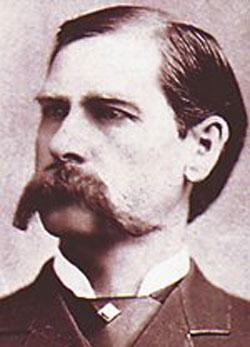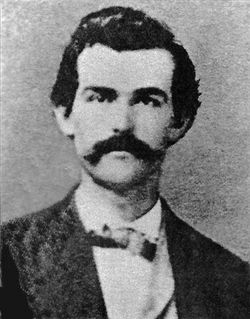
The Earp brothers had long been competing with the Clanton-McClaury ranching families for political and economic control of Tombstone, Arizona, and the surrounding region.
On October 26, 1881, the simmering tensions finally boiled over into violence, and Wyatt, his brothers Virgil and Morgan, and his close friend, Doc Holliday, killed three men from the Clanton and McLaury clans in a 30-second shoot-out on a Tombstone street near the O.K. Corral.
A subsequent hearing found that the Earps and Holliday had been acting in their capacity as law officers and deputies, and they were acquitted of any wrongdoing. However, not everyone was satisfied with the verdict, and the Earps found their popularity among the townspeople was on the wane. Worse, far from bringing an end the long-standing feud between the Earps and Clanton-McLaurys, the shoot-out sparked a series of vengeful attacks and counterattacks.
In late December 1881, the Clantons and McLaurys launched their vendetta with a shotgun ambush of Virgil Earp; he survived, but lost the use of his left arm. Three months later, Wyatt and Morgan were playing billiards when two shots were fired from an unknown source. Morgan was fatally wounded.
As a U.S. deputy marshal, Wyatt had a legal right and obligation to bring Morgan’s killers to justice, but he quickly proved to be more interested in avenging his brother’s death than in enforcing the law. Three days after Morgan’s murder, Frank Stillwell, one of the suspects in the murder, was found dead in a Tucson, Arizona, rail yard.

In the years to come, Wyatt wandered throughout the West, speculating in gold mines in Idaho, running a saloon in San Francisco, and raising thoroughbred horses in San Diego. At the turn of the century, the footloose gunslinger joined the Alaskan gold rush, and he ran a saloon in Nome until 1901.
After participating in the last of the great gold rushes in Nevada, Wyatt finally settled in Los Angeles, where he tried unsuccessfully to find someone to publicize his many western adventures. Wyatt’s famous role in the shootout at the O.K. Corral did attract the admiring attention of the city’s thriving new film industry.
For several years, Wyatt became an unpaid technical consultant on Hollywood Westerns, drawing on his colorful past to tell flamboyant matinee idols like William Hart and Tom Mix how it had really been. When Wyatt died in 1929, Mix reportedly wept openly at his funeral.
Ironically, the wider fame that eluded Wyatt in life came soon after he died. A young journalist named Stuart Lake published Wyatt Earp: Frontier Marshall, a wildly fanciful biography that portrayed the gunman as a brave and virtuous instrument of frontier justice.
Dozens of similarly laudatory books and movies followed, ensuring Wyatt Earp an enduring place in the popular American mythology of the Wild West.

